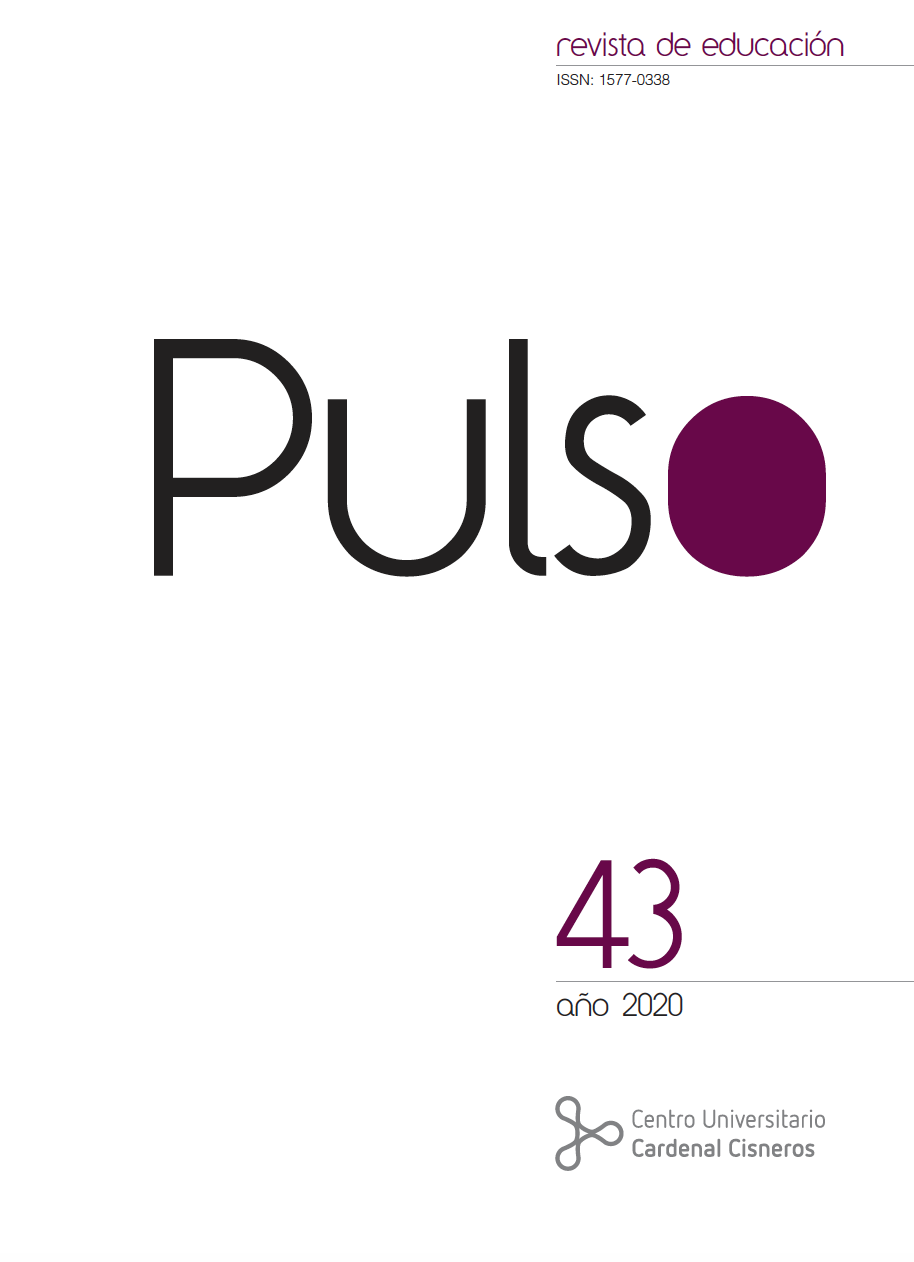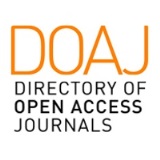Key competences and plurilingual education in the Valencian Region (Spain): A curricular analysis of Primary Education
DOI:
https://doi.org/10.58265/pulso.4798Keywords:
Intercultural education, Communicative competence, Primary education, Cross-curricular training, Quality of educationAbstract
The purpose of this work is to study the level of transversality of key competences in Primary Education in the Valencian Community. To this end, an analysis of the Decree 108/2014 currently in effect will be carried out, along with determining the frequency with which each competence is worked on during this stage of education. The data obtained will be interpreted bearing in mind plurilingual programs and, more specifically, the basis of the methodological needs that are pursued in CLIL, the approach to teaching non-linguistic areas through a foreign language. Generally, the findings point to a lack of transversality in some of the competences, one of them being the linguistic competence. This implies the need for a more cross-curricular competence model for plurilingual education, since the rigid structure of the key competences in the current curriculum and, therefore, the lack of a greater interconnection among them may hinder to a great extent the proper functioning of the principles that the CLIL approach posits.
Downloads
References
Admiraal, W., Westhoff, G. & de Bot, K. (2006). Evaluation of Bilingual Secondary Education in The Netherlands: Students’ language Proficiency in English. Educational Research and Evaluation, 12 (1), 75-93.
Alonso, E., Grisaleña, J. & Campo, A. (2008). Plurilingual Education in Secondary Schools: Analysis of Results. International CLIL Research Journal 1 (1). Retrieved from http://www.icrj.eu/11/ article3.html
Andrade Cazares, R. A. (2008). El enfoque por competencias en educación. Ide@s CONCYTEG, 39.
Anghel, B., Cabrales, A. & Carro, J.M. (2012). Evaluating a bilingual education program in Spain: the impact beyond foreign language learning. Working Paper 2012/30, Institut d’Economia de Barcelona (IEB), 1-31.
Arocena Egaña, E., Cenoz, J. & Gorter, D. (2015). Teachers’ beliefs in multilingual education in the Basque country and in Friesland. Journal of Immersion and Content-Based Language Education, 3 (2), 169-193.
Ayuso Marent, J. A. (2006). El reto de enseñar por competencias. Tavira, 22, 257-264.
Bolarín Martínez, M.J., Porto Curras, M. & García-Villalba, R.M. (2012). Los programas bilingües en la Región de Murcia: situación y valoraciones de profesores de disciplinas no lingüísticas. Educación Siglo XXI, 30 (2), 255-288.
Bolívar, A. (2008). El discurso de las competencias en España: educación básica y educación superior. Red U. Revista de Docencia Universitaria 11. Número monográfico: Formación centrada en competencias (II).
Cepero González, M., García Pérez, A. & López López, M. (2013). Diseño de un programa de intervención bilingüe para el área de Educación Física basado en la competencia digital. Porta Linguarum, 19, 257-273.
Cerezo Herrero, E. (2019) (coord.) Análisis sobre la enseñanza en inglés en la Comunitat Valenciana desde la perspectiva de maestros y profesores. Lynx-Annexa 24.
Coyle, D. (2013). Listening to learners: an investigation into successful learning’ across CLIL contexts. International Journal of Bilingual Education and Bilingualism 16 (3), 244-266.
Dallinger, S., Jonkmann, K., Hollm, J. & Fiege, C. (2016). The effect of content and language integrated learning on students’ English and history competences – Killing two birds with one stone? Learning and Instruction, 41, 23-31.
Decreto 108/2014, de 4 de julio, del Consell, por el que se establece el currículo y desarrolla la ordenación general de la educación primaria en la Comunitat Valenciana. Retrieved from https:// www.dogv.gva.es/portal/ficha_disposicion_pc.jsp?sig=006087/2014&L=1
Díaz Barriga, A. (2006). El enfoque de competencias en la educación. ¿Una alternativa o un disfraz de cambio? Perfiles educativos, 28, 7-36.
Durán-Martínez, R. & Beltrán-Llavador, F. (2016). A Regional Assessment of Bilingual Programmes in Primary and Secondary Schools: The Teachers’ Views. Porta Linguarum, 25, 79-92.
Fernández Cézar, R., Aguirre Pérez, C. & Harris, C. (2009). Implementation of CLIL in Castilla-La Mancha (Spain) and teacher training. In Marsh, D. & Mehisto, P. (Ed.), CLIL Practice: Perspectives from the field. Finlandia, CNN: University of Jyväskylä.
Fernández, R. & Halbach, A. (2011). Analysing the situation of teachers in the CAM bilingual project after four years of implementation. In Ruiz de Zarobe, Y., Sierra, J.M. & Gallardo del Puerto, F. (Ed.) Content and Foreign Language Integrated Learning. Contributions to multilingualism in European contexts. New York: Peter Lang.
Fernández Fernández, R., Pena Díaz, C. & Halbach, A. (2005). La implantación de proyectos educativos bilingües en la Comunidad de Madrid: las expectativas del profesorado antes de iniciar el proyecto. Porta Linguarum, 3, 161-173.
Fernández-Sanjurjo, J., Fernández Costales, A. & Arias Blanco, J.M. (2019). Analysing students’ content-learning in science in CLIL vs. non-CLIL programmes: empirical evidence from Spain. International Journal of Bilingual Education and Bilingualism, 22 (6), 661-674.
Gimeno Sacristán, J. (2008) (coord.). Educar por competencias, ¿qué hay de nuevo? Madrid: Morata.
Jiménez Catalán, R.M. & Agustín Llach, M.P. (2017). CLIL or time? Lexical profiles of CLIL and non-CLIL EFL learners. System, 66, 87-99.
Kerstin Sylvén, L. & Ohlander, S. (2014). The CLISS Project: Receptive Vocabulary in CLIL versus non-CLIL Groups. Moderna Sprak, 2, 80-108.
Laorden Gutiérrez, C. & Peñafiel Pedrosa, E. (2010). Proyectos bilingües en los centros de la Comunidad de Madrid: Percepción de los equipos directivos. Revista de Investigación Educativa, 28 (2), 325-344.
Lorenzo, F., Casal, S. & Moore, P. (2009). The Effects of Content and Language Integrated Learning in European Education: Key Findings from the Andalusian Bilingual Section Evaluation Project. Applied Linguistics, 31 (3), 418-442.
Lova Mellado, M., Bolarín Martínez, M. & Porto Currás, M. (2013). Programas bilingües en Educación Primaria: Valoraciones de docentes. Porta Linguarum, 20, 253-268.
Lozano-Martínez, L. (2017). Los docentes en los programas de educación bilingüe en Cantabria. ELIA Estudios de Lingüística Inglesa Aplicada, 17, 93-123.
Marsh, D. (2002). CLIL/EMILE-The European Dimension: Actions, Trends and Foresight Potential. Public Services Contract DG EAC, European Commission, Strasbourg.
Martínez Agudo, J.D. (2019). The impact of CLIL on English language competence in monolingual context: a longitudinal perspective. The Language Learning Journal, 47. Retrieved from https:// doi.org/10.1080/09571736.2019.1610030
MECD (n.d.). Competencias clave. Retrieved from https://www.boe.es/diario_boe/txt. php?id=BOE-A-2015-738
Mehisto, P., Marsh, D. & Frigols, M.J. (2008). Uncovering CLIL: Content and Language Integrated Learning in Bilingual and Multilingual Education. Oxford: Macmillan.
Merino, J.A & Lasagabaster, D. (2018). CLIL as a way to multilingualism. International Journal of Bilingual Education and Bilingualism, 21 (1), 79-92.
Meyer, Oliver (2010). Towards quality-CLIL: successful planning and teaching strategies. Pulso. Revista de Educación, 33, 11-29.
Meyer, O. & Coyle, D. (2017). Pluriliteracies Teaching for Learning: conceptualizing progression for deeper learning in literacies development. European Journal of Applied Linguistics, 5 (2), 199-222.
Meyer O., Coyle, D., Imhof, M. & Connolly, T. (2018). Beyond CLIL: Fostering Student and Teacher Engagement for Personal Growth and Deeper Learning. In Martínez Agudo, J.D. (Ed.), Emotions in Second Language Teaching. Theory, Research and Teacher Education. Switzerland, Springer.
Morin, E. (2001). Los siete saberes necesarios para la educación del futuro. Barcelona: Seix Barral.
Organización para la Cooperación y el Desarrollo Económico (OCDE) (2005). La definición y selección de competencias clave. Resumen ejecutivo. Retrieved from http://deseco.ch/bfs/deseco/en/index/03/02.parsys.78532.downloadList.94248.DownloadFile.tmp/2005.dscexecutivesummary.
sp.pdf
Parlamento Europeo y Consejo de la Unión Europea (2006). Recomendación del Parlamento Europeo y del Consejo de 18 de diciembre de 2006 sobre las competencias clave para el aprendizaje permanente. Diario Oficial de la Unión Europea. Retrieved from http://infofpe.cea.es/fpe/norm/Rec%2018_2006.pdf
Perrenaud, P. (2001). La formación de los docentes en el siglo XXI. Revista de Tecnología Educativa, 3, 503-523.
Pérez Cañado, M.L. (2018). CLIL and Educational Level: A Longitudinal Study on the Impact of CLIL on Language Outcomes. Porta Linguarum, 29, 51-70.
Pena Díaz, C. & Porto Requejo, M.D. (2008). Teacher beliefs in a CLIL education project. Porta Linguarum, 10, 151-161.
Pladevall-Ballester, E. (2015). Exploring primary school CLIL perceptions in Catalonia: students’, teachers’ and parents’ opinions and expectations. International Journal of Bilingual Education and Bilingualism, 18 (1), 45-59.
Romeu Peyró, M.C. (2016). Desarrollo de las habilidades de pensamiento en la metodología AICLE en Educación Primaria: un análisis de materiales para Ciencias Naturales. PhD Dissertation. Alfara del Patriarca (Valencia), Universidad CEU Cardenal Herrera.
Surmont, J., Struys, E., Van Den Noort, M. & Van De Craen, P. (2016). The effects of CLIL on mathematical content learning: A longitudinal study. Studies in Second Language Learning and Teaching, 6 (2), 319-337.
Tobón, S. (2006). Aspectos básicos de la formación basada en competencias. Talca, Proyecto Mesesup.
Travé González, G. (2013). Un estudio sobre las representaciones del profesorado de Educación Primaria acerca de la enseñanza bilingüe. Revista de Educación, 361, 379-402.
Tumino, M.C. & Bournissen, J.M. (2016). El paradigma de la enseñanza por competencias y los principios del conectivismo: una experiencia práctica. Actas del XXII Congreso Argentina de Ciencias de la Computación (CACIC). Universidad Nacional de San Luis, Argentina.
Viso Alonso, J.R. (2010). Enseñar y aprender por competencias. ¿Qué son las competencias? Vol. I. Madrid: EOS (Instituto de Orientación Psicológica Asociados).
Zabala, A & Arnau, L. (2007). 11 ideas clave. Cómo aprender y enseñar competencias. Barcelona: Graó.
Downloads
Published
How to Cite
Issue
Section
License
Copyright (c) 2022 Pulso. Revista de educación

This work is licensed under a Creative Commons Attribution-NonCommercial-NoDerivatives 3.0 Unported License.
This journal offers immediate open access to its content based on the idea that offering readers free access to research favours a global exchange of knowledge.
Papers are published in the electronic version of the journal under a Creative Commons License: Attribution-NonCommercial-No derivatives 4.0 International
Authors are allowed and encouraged to promote the post-print version (reviewed and accepted for publication version) of their work online before publishing them. This favours their earlier circulation and dissemination and thus a possible increase in their citation and reach among the academic community.














